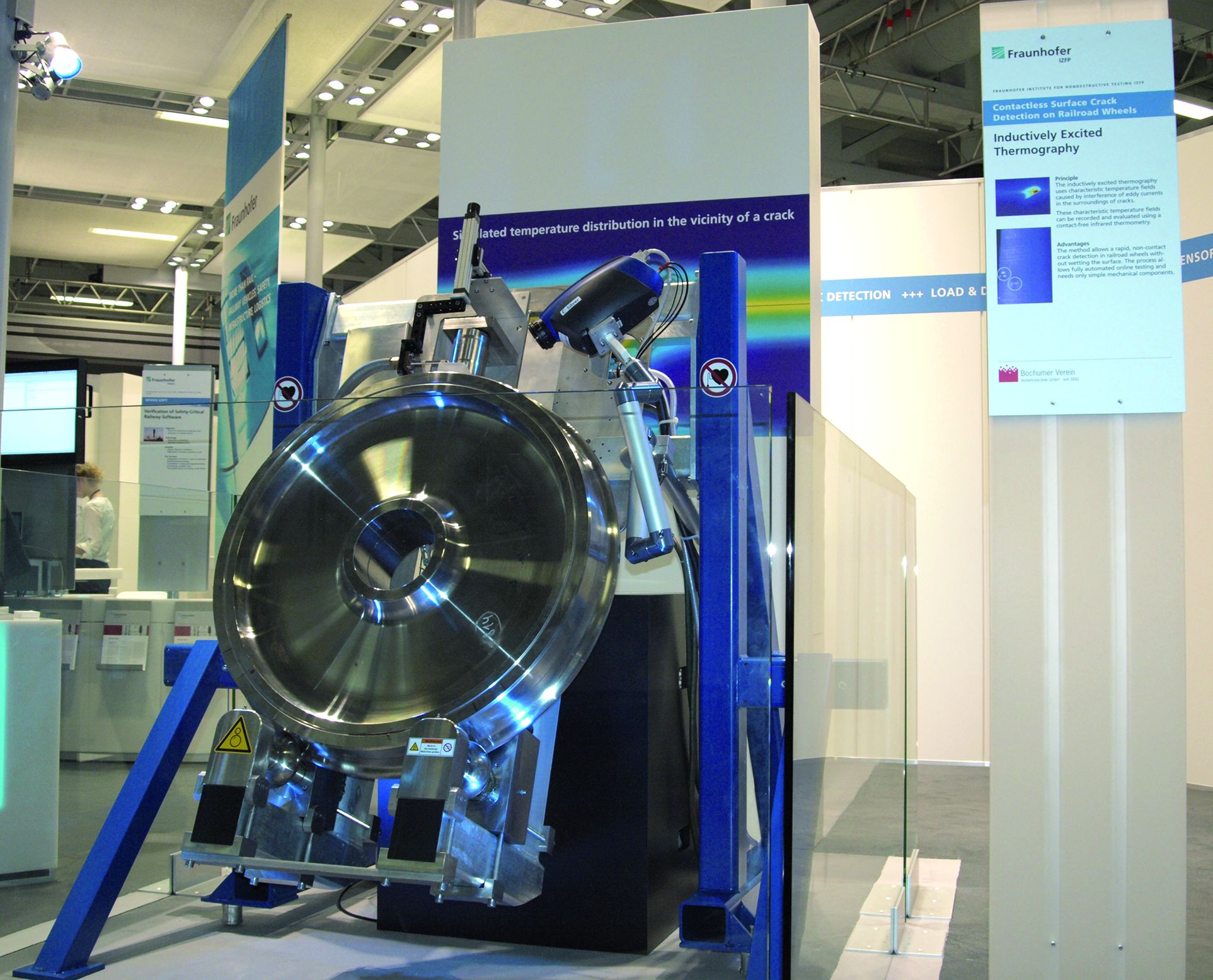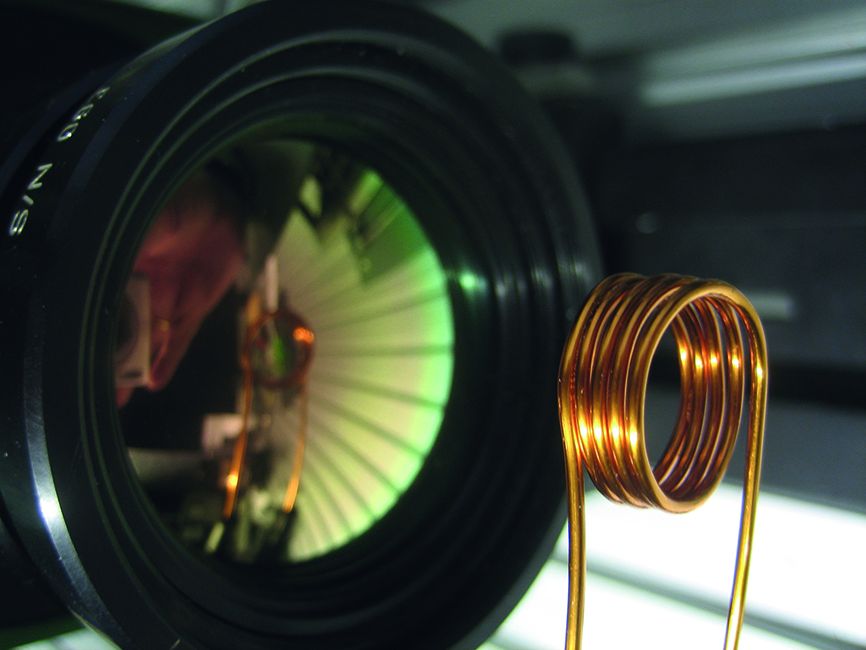Tracking Down Minute Cracks – Active Thermography with Inductive Excitation


In many branches of industry safety-relevant components have to undergo a one hundred percent check in order to exclude surface cracks during manufacture. In the future, all procedures that do not require special surface treatment, that work reliably and objectively and that enable a fully automatic examination of components are given a competitive edge. Inductively excited thermography permits surface inspections for cracks without surface treatment; it is fast and fit for automatization. It is an objective procedure that provides reliable test results and additionally makes it possible to determine the location of the defect (crack depth). Thus it is suited for fully automatic test facilities that carry out a one hundred percent testing of components in industrial production lines.
Fraunhofer IZFP has a comprehensive range of technical equipment for different variations of active thermography:
- optical impulse and “lock-in” excitation (periodic excitation)
- ultrasonic excitation
- inductive excitation by electromagnetic alternating fields
- noncontact infrared measurement technology with infrared camera system for close, medium and long-wave infrared radiation area with temperature resolutions up to approx. 15 mK and image frequencies up to 20 kHz (time resolutions up to 50 μs) at image resolutions up to 1024 x 768 pixels
- robots and linear adjustment units for fast automated testing with integrated thermographic systems
- software for testing system control, and data processing and measurement data evaluation as well as for automatic defect detection and defect reconstruction
- theoretical and experimental tests concerning the physical principles and application possibilities of different active thermal testing technologies
Range of services
- test measurements and feasibility studies for industrial applications
- tests based on the accreditation of the institute’s test and application center
- conception, planning and construction of mobile test systems
- conception, planning and construction of fully automated test facilities for the online testing of components in the production line, including robot-assisted test systems
Advantages
- non-destructive, contactless and fast examination method for surface crack testing
- testing of components with complex geometries
- possibility of determining crack depths
- possibility of verifying hidden defects
- objective and reliable testing of components in industrial manufacture
- capacity for easy automation without greater mechanical effort
- suited for fully automated testing facilities for one hundred percent testing of components in industrial production lines
Applications
- crack detection on forging parts
- in-process crack detection on long products made of steel
- tests for surface cracks on railway tracks and wheels
- detection of delamination in metallic material compounds
- replacement for magnetic particle inspection
- crack detection in photovoltaic cells
- crack detection in turbine components
- detection of fiber breakage in CFRP
 Fraunhofer Materials
Fraunhofer Materials